“How vain it is to sit down to write when you have not stood up to live.”
Henry David Thoreau, journal entry (Aug. 19, 1851)
TT: So you want to see a show?
Here’s my list of recommended Broadway, off-Broadway, and out-of-town shows, updated weekly. In all cases, I gave these shows favorable reviews (if sometimes qualifiedly so) in The Wall Street Journal when they opened. For more information, click on the title.
Warning: Broadway shows marked with an asterisk were sold out, or nearly so, last week.
BROADWAY:
• La Cage aux Folles (musical, PG-13, adult subject matter, reviewed here)
• Fela! (musical, PG-13, adult subject matter, reviewed here)
• Fences * (drama, PG-13/R, adult subject matter, closes July 11, reviewed here)
• Million Dollar Quartet (jukebox musical, G, reviewed here)
• South Pacific (musical, G/PG-13, some sexual content, brilliantly staged but unsuitable for viewers acutely allergic to preachiness, closes Aug. 22, reviewed here)
OFF BROADWAY:
• Alfred Hitchcock’s The 39 Steps (comedy, G, suitable for bright children, original Broadway production reviewed here)
• Avenue Q (musical, R, adult subject matter and one show-stopping scene of puppet-on-puppet sex, reviewed here)
• The Fantasticks (musical, G, suitable for children capable of enjoying a love story, reviewed here)
• Our Town (drama, G, suitable for mature children, reviewed here)
IN CHICAGO:
• The Farnsworth Invention (drama, G, too complicated for children, closes July 24, reviewed here)
• Killer Joe (black comedy-drama, X, extreme violence and nudity, closes July 18, reviewed here)
IN GLENCOE, ILL.:
• A Streetcar Named Desire (drama, PG-13, adult subject matter, closes July 18, reviewed here)
CLOSING SOON IN EAST HADDAM, CONN.:
• Annie Get Your Gun (musical, G, child-friendly, closes July 3, reviewed here)
CLOSING SOON IN PHILADELPHIA:
• Sunday in the Park with George (musical, PG-13, far too complex for children, closes July 4, reviewed here)
CLOSING NEXT WEEK OFF BROADWAY:
• That Face (drama, PG-13, not suitable for children, closes June 27, reviewed here)
TT: Almanac
“As well as a native, half-knavish wit, his was that careful mean shrewdness by which alone a man can climb, not too visibly soiled, through the sewer-like lower labyrinth of American politics.”
James Gould Cozzens, The Last Adam
TT: Jonathan Wolken, R.I.P.
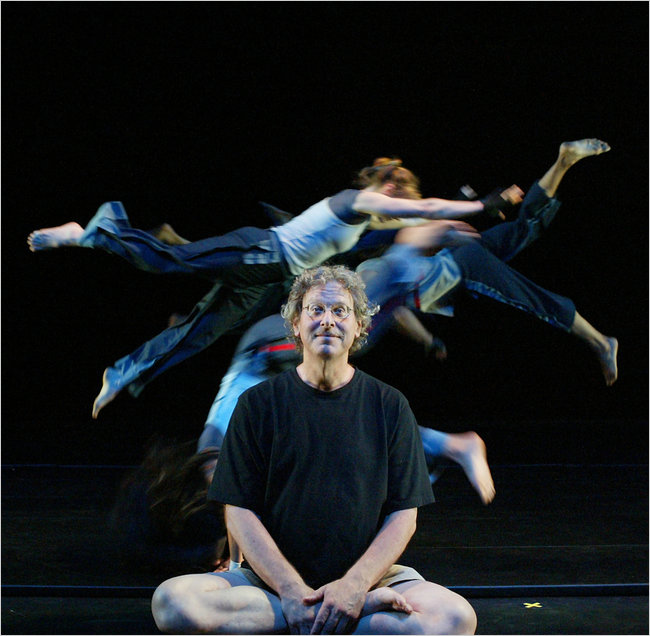 I’ve been a fan of Pilobolus Dance Theatre ever since I started to look at the dance, and my admiration deepened when I began writing about ballet and modern dance in 1990. From then on I had frequent occasion to write about Pilobolus, whose unique brand of theatrical trompe l’oeil is easy to describe but hard to explain, as I rediscovered time and again during my tenure as dance critic of the New York Daily News:
I’ve been a fan of Pilobolus Dance Theatre ever since I started to look at the dance, and my admiration deepened when I began writing about ballet and modern dance in 1990. From then on I had frequent occasion to write about Pilobolus, whose unique brand of theatrical trompe l’oeil is easy to describe but hard to explain, as I rediscovered time and again during my tenure as dance critic of the New York Daily News:
The lights go down, the curtain goes up, and six half-clothed dancers come running on stage and immediately start tying themselves into exotic knots and strange, almost-familiar shapes. Are you dreaming? Are you trapped inside a surrealist painting? No, you’re just watching Pilobolus Dance Theatre, a group so witty and imaginative that it has flourished for a quarter-century…
Pilobolus Dance Theatre is among the most popular and successful companies in the history of American dance. The members of Pilobolus have twisted themselves into indescribably kinky knots everywhere from the Edinburgh Festival to The Tonight Show and Sesame Street, accompanied by everything from bluegrass and rap to Corelli and Carmina Burana. Their wry, often light-hearted style–an eye-popping combination of dance, gymnastics and performance art–appeals not just to modern-dance buffs but to audiences of all kinds.
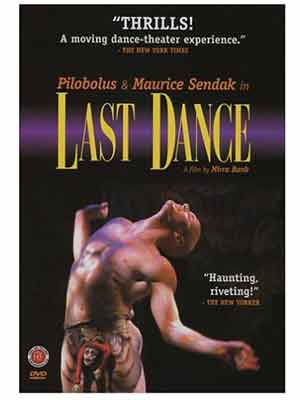 I got to know Jonathan Wolken, one of the group’s founders, when I spent a couple of days watching Pilobolus audition new dancers at New York’s City Center, then wrote a piece for the New York Times about the experience. We hit it off, and a year later Jonathan and his colleagues allowed me to be a fly on the wall as they created a new dance in collaboration with Maurice Sendak. That unforgettable experience led not only to another piece for the Times, but to my appearing in Last Dance, Mirra Banks’ 2002 documentary about the creation of A Selection, the Pilobolus-Sendak dance that I’d seen being made three years earlier.
I got to know Jonathan Wolken, one of the group’s founders, when I spent a couple of days watching Pilobolus audition new dancers at New York’s City Center, then wrote a piece for the New York Times about the experience. We hit it off, and a year later Jonathan and his colleagues allowed me to be a fly on the wall as they created a new dance in collaboration with Maurice Sendak. That unforgettable experience led not only to another piece for the Times, but to my appearing in Last Dance, Mirra Banks’ 2002 documentary about the creation of A Selection, the Pilobolus-Sendak dance that I’d seen being made three years earlier.
I never got to know Jonathan more than casually–he was prickly and self-possessed in a way that I found intimidating–but I liked and admired him and was always pleased to chat with him about Pilobolus and its doings whenever the group was in town for one of its summer seasons at the Joyce Theater. Alas, the demands of my work as a drama critic forced me to spend less time attending dance performances, and so I was taken completely by surprise when I learned last night that Jonathan had died at the absurdly untimely age of sixty.
I find it hard to grasp that one of the founding members of a performing ensemble that has long been so much a part of my aesthetic life is no longer with us. The good news–if you can call it that–is that the dances that Jonathan helped to create, like Pilobolus itself, will survive him for a very long time to come. Even so, his death tears a hole in the world, one that for me is larger still because he was only six years my senior. I always thought of Jonathan Wolken as an elder statesman of dance. Somehow it never occurred to me that a mere half-generation separated us. The not-so-old order passeth….
* * *
Jonathan’s New York Times obituary is here.
TT: Snapshot
Patricia Neway sings “To this we’ve come” in a 1960 telecast of Gian Carlo Menotti’s The Consul, conducted by Werner Torkanowsky. Neway created the role of Magda Sorel in the opera’s original 1950 Broadway production:
(This is the latest in a weekly series of arts-related videos that appear in this space each Wednesday.)
TT: Almanac
“But what is Hope? Nothing but the paint on the face of Existence. The least touch of truth rubs it off, and then we see what a hollow-cheeked harlot we have got hold of.”
Lord Byron, letter to Thomas Moore, Oct. 28, 1815
TT: Gentlemen, start your engines
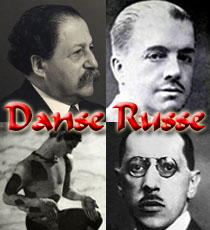 Paul Moravec and I are now at work on our second opera–but don’t call it that!
Paul Moravec and I are now at work on our second opera–but don’t call it that!
The Philadelphia International Festival of the Arts, which gets underway on April 1, 2011, is a citywide venture that will encompass the premieres of thirty-one works intended to capture “the inventive, no-holds-barred spirit of Paris: 1910-1920, the inspiration and theme of the 25-day festival.” Center City Opera Theater is contributing to the festivities with a program that will pair Renard, a rarely produced one-act chamber opera composed in 1916 by Igor Stravinsky, with a new work written for the same performing forces as Renard, four male singers (two tenors, a baritone, and a bass-baritone) and a small instrumental ensemble.
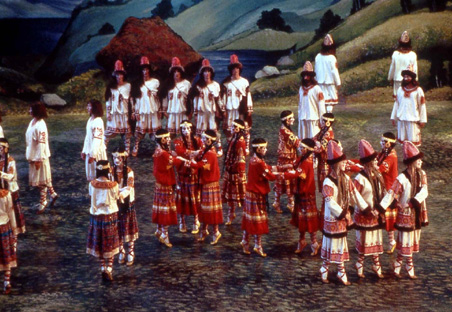 Andrew Kurtz, who runs Center City Opera, invited Paul and me to write a companion piece to Renard. I came up with the idea of a backstage farce about the creation of Stravinsky’s Rite of Spring. The title is Danse Russe. The four characters, whose real-life models are pictured above, are:
Andrew Kurtz, who runs Center City Opera, invited Paul and me to write a companion piece to Renard. I came up with the idea of a backstage farce about the creation of Stravinsky’s Rite of Spring. The title is Danse Russe. The four characters, whose real-life models are pictured above, are:
• Sergei Diaghilev, the founder of the Ballets Russes, who commissioned The Rite of Spring
• Vaslav Nijinsky, Diaghilev’s lover and star dancer, who choreographed the ballet
• Pierre Monteux, who conducted the first performance
• Stravinsky himself
Unlike The Letter, our previous collaboration, Danse Russe is a knockabout comedy with spoken dialogue. We’re calling it a “vaudeville,” and we expect it to play more like a musical than an opera. I finished the first draft of the libretto three weeks ago, and Paul started writing the music last week.
We open in Philadelphia on April 15–and yes, I’ll be blogging with steadily increasing frequency about the making of Danse Russe between now and then.
More as it happens.
CAAF: Your ex-girlfriend gives it one year, tops
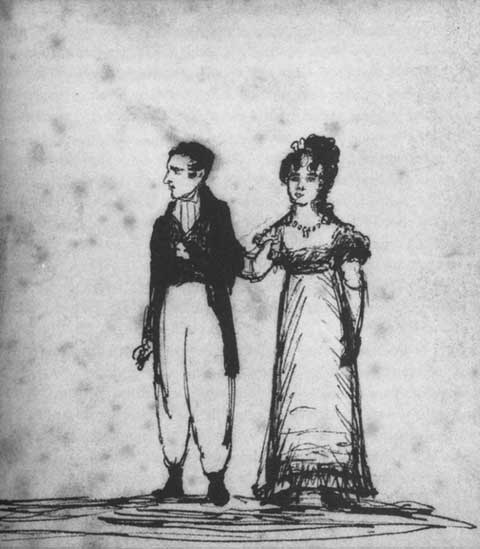
I’m amused by this pen and ink sketch of Lord and Lady Byron shortly after their marriage. It was drawn by Lady Caroline Lamb, who had carried on an affair with the poet before being thrown over a few years before (it was Lamb who called Bryon “mad, bad and dangerous to know”). As with the couple’s correspondence about religion, it’s an early signal that the marriage was headed for a spectacular flame-out. Lamb was hardly objective of course, but look at that body language!
The sketches Lamb kept in her journals have real wit and charm. But the novel she later wrote about Byron, Glenarvon, is wonderfully terrible. I’m reading it right now and it’s like slogging through a juvenile Bronte effort with all the trotting around moonlit ruins and character names like Calantha, the Duchess of Altamonte and Sir Everard St. Clare. Sample:
At this very period of time, in the prosecution of her sudden and accursed designs, having bade adieu to brighter climes and more polished manners, with all the gaiety of apparent innocence, and all the brilliancy of wit which belongs to spirits light as air and a refined and highly cultivated genius, she was sailing, accompanied by a train of admirers, selected from the flower of Italy, once again to visit her native country.
That does sound fancy, doesn’t it? And evil. I wish Lamb had done the book as a graphic novel instead.
(Sketch scanned from Fiona MacCarthy’s very good Bryon: Life and Legend.)
